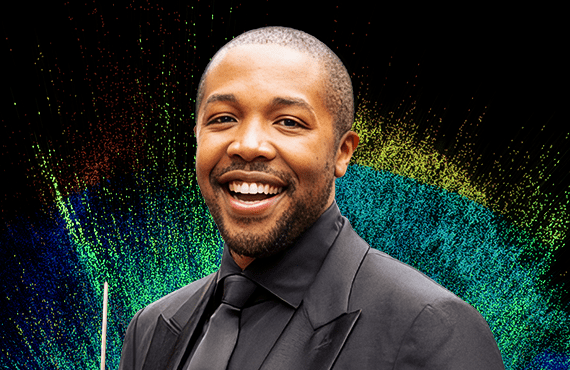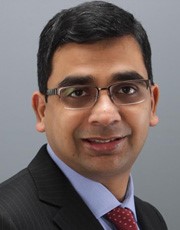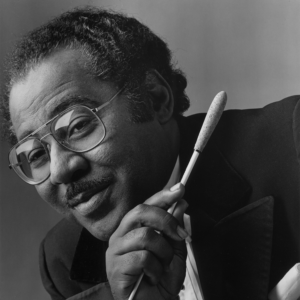
At a moment in our history when conservation is crucial and time is of the essence, Chicago Sinfonietta seeks to illuminate environmental change through the power of symphonic music. Forces + Fates, the orchestra’s first conversation of the season, explores the volatility of our planet, and how its future rests solely in the hands of the human race.
Two of the concert’s featured composers, Clarice Assad (Nhanderu) and Michelle Isaac (Earth Tryptich, with Stefan L. Smith and Fernando Arroyo Lascurain), discuss the creative impetus for this environment-themed concert, and how the same priority for planetary preservation extends to the lifeblood of classical music.

Why is classical music such a powerful tool for you, creatively?
Clarice: I think I can say more with music than I can say with words sometimes. That’s the way that I grew up. Starting with a theme or idea following a storyline or motion – trying to play with that within the music if that makes any sense. With classical music, I can paint a picture of what I’m passionate about, what fuels me, what inspires me.
How does that passion relate to this environmental concert in particular?
C: I was always fascinated by Native American culture, and I really identify with the native cultures of Brazil. The Amazon, the tribes that were there – I studied a lot of their music, and I really enjoyed all of their beautiful rituals with the rain, calling it to help with their crops. It’s worshiping, really. They’re asking for help, getting nature to work with them without trying to manipulate it. I wanted to recreate that in the music. One thing I found effective was to get the orchestra to chant and perform with some effects that would sound like rain falling.
What does your creative process look like at present?
Michelle: I’m trying to nail down my creative process. It’s a lot of trial and error. For this piece, I started by just reading really depressing news articles about the state of the planet. I tend to draw a lot of pictures, doodles, and graphs. I write out prose to get ideas going and end up brainstorming a lot of the emotions you feel when you read these things. Sometimes I build compositional structures off of those things, or I use that as a starting point for basic emotions I’m trying to get to. It’s all one big learning process for me right now, and hopefully it works!
Do you think the creative process shifts as you grow as a composer and musician?
C: Mine is still evolving. I think that it never stops evolving, and that’s the idea. I never like to repeat myself if I’m capable of doing so. I’ll try really hard not to do that. When it comes to orchestrating a passage, I always try to do something different. I get upset when I can’t, because oftentimes we tend to fall back on many things that we know work.

Michelle, we spoke a little about the background of Clarice’s piece and what’s she’s trying to convey. What kind of message are you trying to convey about the planet in your movement of Earth Triptych, both socially and musically?
M: The main message of my movement is a sense of urgency: the idea that we’re hitting a point of extremes not only in weather and temperatures, but also in human indifference. It is also extreme in the sense that we are running out of time to do anything about it. So musically, that’s also the impetus – it starts very slow and harmoniously, and makes people comfortable. By the end of it, it’s very aggressive and is written to make the audience feel very uncomfortable.
Clarice, are there components of Nhanderú that share the same outlook as Earth Triptych?
C: No, it’s different. I wasn’t thinking about climate change or anything like that. It’s more about nature evolving on its own. In a way, it’s the opposite of Michelle’s. It’s going back before all of this stuff started to happen and before we started mutilating the earth.
M: The first movement of Earth Triptych that Stefan is composing touches more on the sentiments of Clarice’s piece because it represents Earth before humans. The point of Earth Triptych is to show that there is beauty that we should be protecting. We depict the beauty, what we’re doing to it, and where we’re going to go from there. So, they’re two different snapshots of the same human-to-earth relationship – at different times, in different cultures, with different messaging.
What is the dynamic like in trying to get the movements of Earth Triptych to communicate with one another?
M: It’s pretty unusual for three composers to collaborate on one piece and make it sound cohesive. We’re still trying to figure out the best way to do that. At this point, it’s going to end up being a dialogue like any other, where different voices come to the table to discuss the same thing and hopefully find some common ground.
Are there parallels between the story that we’re telling about the earth and the state of classical music? Are there parallels regarding the evolution of this artform with the discussion that we’re having in the concert?
C: I think we’re not really damaging the Earth so much as we are damaging the capacity of life. We could disappear overnight, and the Earth would still be here, and it would probably be better off without us. We have to self-preserve. It’s kind of interesting because humans are usually very individualistic, and that’s not a good thing.
Going back to the state of classical music, everything is a little up in the air now, and yes, I think that we’re not listening. We’re not focusing because of all the information that we’ve got in our lives. This kind of music requires attention and listening, and that’s kind of a lost art form in a way. It absolutely links back to what is happening in our world. No one is stopping to listen and pay attention, and enjoy nature.
What steps should we be taking to preserve and evolve classical music?
C: It’s evolving no matter what. That’s the beauty of things that are struggling and have a hard time thriving. One thing to consider is the education system. It really needs attention as a whole. We learn things when we’re very young, and we learn values, we embrace what’s important, and we create habits. The fact that there’s no music in schools is pretty bad, the fact that we don’t really teach kids to preserve nature is really bad. It all goes hand in hand.
M: I absolutely agree. There are, in both the environmental and classical music movements, people who are doing the work, who are preserving, listening, and innovating. But it takes more than that if we want to see both come back to life in a more universal, global spread.
Just having this sort of dialogue in a concert hall is really important, and a really cool thing that Chicago Sinfonietta is doing. It’s not done very often. Maybe that’s the way to get people talking about both of these issues – the parallels between environmentalism and classical music and why we need both of them.
Both Nhanderú and Earth Triptych will be premiered on the first concert of our 2019-20 season, Forces + Fates. Get your tickets now!













